UPSC Daily Current Affairs - 2nd July 2024 | Current Affairs & Hindu Analysis: Daily, Weekly & Monthly PDF Download
GS3/Economy
What is Project Nexus that RBI has signed up for?
Source: Indian Express
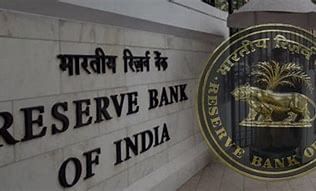
Why in news?
The Reserve Bank of India (RBI) has become a part of Project Nexus, a global initiative aimed at facilitating instant cross-border retail payments by connecting domestic Fast Payments Systems (FPSs).
What is Project Nexus?
- Project Nexus is conceptualized by the Innovation Hub of the Bank for International Settlements (BIS).
- It is the first BIS Innovation Hub project in the payments area moving towards live implementation.
Aim:
- To enhance cross-border payments by connecting multiple domestic instant payment systems (IPS) globally.
RBI has joined Project Nexus, aiming to interlink India's Unified Payments Interface (UPI) with the Fast Payments Systems (FPSs) of Malaysia, the Philippines, Singapore, and Thailand.
The platform is designed to be extended to more countries in the future.
About Fast Payments Systems (FPSs):
- Fast payment systems (FPSs) are real-time payment systems that enable the immediate transfer of funds between accounts.
- Some key points about FPSs:
- FPSs allow for the fast, secure, and low-cost processing of retail transactions, ensuring funds are immediately available to the recipient.
- FPSs are becoming increasingly popular globally, with over 100 jurisdictions now having access to fast payment systems. They foster competition among payment service providers and serve as a gateway to additional financial services.
- The design of FPSs is important, as they have public good characteristics. Factors that contribute to greater adoption of FPSs include central bank involvement, inclusion of non-bank providers, more use cases, and more cross-border connections.
- Examples of FPSs include the Faster Payments Service (FPS) in the UK, which was instituted in 2008 to reduce payment times between accounts. The Faster Payment System in Hong Kong, launched in 2018, also provides instant, low-cost interbank transfers.
What are the benefits of the platform?
- Standardization: Project Nexus standardizes the way IPS connect to each other, simplifying the process.
- Single Connection: Payment system operators can connect to the Nexus platform once, allowing them to reach all other countries on the network without building custom connections for each.
- Instant Payments: Enables cross-border payments from sender to recipient within 60 seconds in most cases.
- Cost Efficiency: Provides near-zero cost for sending and receiving payments.
- Growth Acceleration: Significantly accelerates the growth of instant cross-border payments by leveraging existing instant payment systems.
Which countries have joined the platform?
- Founding Members:
- The FPSs of Malaysia, the Philippines, Singapore, Thailand, and India are the founding members and first-mover countries.
- An agreement was signed by the BIS and the central banks of the founding countries are Bank Negara Malaysia (BNM), Bank of Thailand (BOT), Bangko Sentral ng Pilipinas (BSP), Monetary Authority of Singapore (MAS), and Reserve Bank of India on June 30, 2024, in Basel, Switzerland.
- Indonesia will also join the platform in the future.
Way forward:
- Expand Membership: Actively encourage more countries to join Project Nexus, thereby increasing the global reach and impact of the platform.
- Enhance Technological Infrastructure: Invest in robust and scalable technological infrastructure to support seamless integration and interoperability among different FPSs.
Mains PYQ:
What is Cryptocurrency? How does it affect global society? Has it been affecting Indian society also?
GS2/Polity
Lok Sabha Speaker vs Opposition over muting of mics
Source: Financial Express
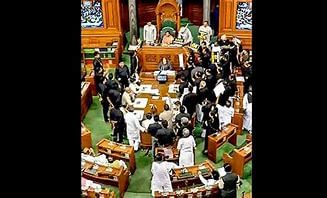
Why in news?
In the recent Parliament Session, Leader of the Opposition Rahul Gandhi alleged for the second time that his microphone had been turned off during his speech. Lok Sabha Speaker Om Birla, however, clarified that presiding officers lack the ability to mute members' microphones and objected to allegations against the Chair.
Microphone and Switch System in the House
- Each MP is assigned a seat in the House with a microphone and switch set at their desks, each with specific numbers.
- The switchboard, as per the manual released by the Lok Sabha Secretariat in May 2014, contains multiple switches in different colors.
- Activation of the microphone when an MP wishes to speak involves raising their hand to inform the presiding officer and pressing the grey button.
- The LED on microphones turns red when the microphone is activated.
Control Room Operations
- Both Lok Sabha and Rajya Sabha have sound technician chambers that transcribe and record Parliament proceedings.
- The chamber contains an electronic board with assigned seat numbers of members.
- Microphones are turned on and off from this room, which has a glass facade allowing staff to observe presiding officers and MPs.
- Microphones are only activated when a member is called upon by the Chair.
Speaking Rules and Time Limits
- In the Zero Hour, a three-minute time limit is granted to each member, with the microphone automatically turning off after the time elapses.
- During bill debates, time is allocated for each party, with the Chair adhering to this time frame and granting extra time at their discretion.
- Only the Lok Sabha Speaker and Rajya Sabha Chairman can control the switching on and off of microphones in special circumstances.
In Case of Special Mentions
- MPs have a restriction of reading out 250 words for Special Mentions. The microphone is turned off by chamber staff once the limit is reached.
- Special Mentions enable MPs to raise urgent matters without prior notice.
Recent Incidents
- Last week, Rahul Gandhi claimed his microphone was turned off while attempting to address NEET irregularities.
- In July 2023, Mallikarjun Kharge, Congress chief and Leader of the Opposition in the Rajya Sabha, reported his microphone being switched off, considering it a breach of his privilege and an affront to his self-esteem.
Constitutional Provisions
- Article 105 defines the powers, privileges, and immunities of Parliament, its members, and committees.
- Article 194 defines similar powers, privileges, and immunities for State Legislatures, their members, and committees.
- It is deemed a breach of privilege and contempt of the House to make speeches or publish libel reflecting negatively on the House, its Committees, or any member's character or conduct.
- The Constitution grants special privileges to parliamentarians and legislators to uphold the dignity and authority of the Houses, although these powers are not codified.
GS1/Indian Society
At the end of Pride Month, assessing the LGBTQIA+ communities’ rights
Source: News 18
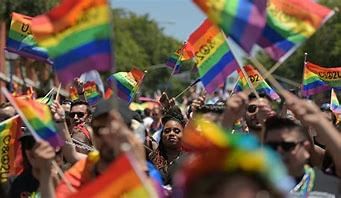
Why in news?
Every June, Pride Month is celebrated globally to honor the contributions of LGBTQIA+ community members and to promote love, diversity, and acceptance.
Varying rights and status of LGBTQIA+ communities across the world
- Legalization and Criminalization of Same-Sex Acts: The legal status of same-sex acts varies significantly while 37 countries have fully legalized same-sex marriage, 59 countries still penalize any expression of queerness, with severe punishments in some regions.
- Marriage Rights: Same-sex marriage is legal in 37 countries, banned in 79 countries, and in some places, same-sex couples can only opt for civil unions, leaving their status partially recognized.
- Employee Protections: Legal protections for queer employees are inconsistent. While 27 countries offer legal aid based on sexual orientation, 90 countries lack any legal protections for queer employees. India and three other countries provide legal aid based on gender identity, including transgender persons.
- Adoption Rights: Adoption rights for same-sex couples also vary. In 39 countries, same-sex parents can adopt children, while 45 countries ban this practice. In 100 countries, single parents can adopt under certain conditions, similar to India’s laws.
- Social and Legal Challenges: Despite legal advancements in some areas, LGBTQIA+ individuals globally continue to face significant social and legal challenges, including discrimination, harassment, and exclusion, with varying levels of legal aid and recognition depending on the country.
Indian Scenario
- Decriminalization of Homosexuality: In 2018, the Supreme Court of India partially struck down Section 377 of the Indian Penal Code, decriminalizing homosexuality. Same-sex couples have the right to cohabitation but not to legal marriage or unions.
- Discrimination and Harassment: Queer individuals in India still face significant discrimination, harassment, and exclusion.
- Legal Protections for Transgender and Intersex Individuals: The Transgender Persons (Protection of Rights) Act, 2019, prohibits unfair treatment in employment, education, healthcare, public facilities, and residence. Legal recourse is available for discrimination based on gender identity but not sexual orientation. Same-sex couples cannot be recognized as co-parents to an adopted child. Single prospective adoptive parents, regardless of marital status, are allowed to adopt under the Juvenile Justice (Care and Protection of Children) Act, 2015.
Way forward
- Expand Legal Recognition: Countries should work towards fully recognizing same-sex marriages and providing comprehensive legal protections against discrimination based on sexual orientation and gender identity.
- Education and Awareness: Implement nationwide educational programs to raise awareness about LGBTQIA+ issues, combat stereotypes, and promote understanding and acceptance. This can involve incorporating LGBTQIA+ history and rights into school curriculums and conducting public awareness campaigns.
- Economic Opportunities: Ensure equal opportunities in the workplace by promoting diversity and inclusion policies, providing sensitivity training for employers, and supporting LGBTQIA+ entrepreneurs. Governments and organizations can offer grants, mentorship programs, and other resources to empower LGBTQIA+ individuals economically.
Mains PYQ
‘Women’s movement in India has not addressed the issues of women of lower social strata.’ Substantiate your view. (UPSC 2018)
GS-III/Environment & Biodiversity
Fauna of India Checklist Portal
Source: The Hindu
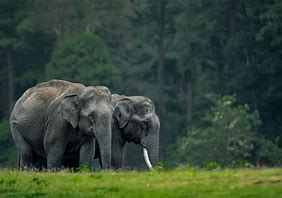
Why in News?
The Union Minister of Environment, Forest, and Climate Change (MoEFCC) has launched a portal documenting all animal species in India. The Portal was launched on the 109th Foundation Day of the Zoological Survey of India (ZSI) in Kolkata.
Back2Basics: Zoological Survey of India
The ZSI was established in 1916 by British zoologist Thomas Nelson Annandale. It is the premier taxonomic research organization in India, aimed at promoting surveys, exploration, and research to enhance our understanding of India's diverse animal life.
- The ZSI originated as the Zoological Section of the Indian Museum in Calcutta in 1875.
- Since its inception, the ZSI has been involved in documenting the diversity and distribution of India's fauna to fulfill its mission of conducting exploration-cum-taxonomic-research programs.
- The ZSI has extensively published information on all animal taxa, ranging from Protozoa to Mammalia.
About the Fauna of India Checklist Portal
The portal contains records of over 100,000 animal species compiled by more than 150 scientists from the Zoological Survey of India over a two-year period.
- This checklist represents the first comprehensive document on faunal species in India, encompassing 121 checklists of all known taxa across 36 phyla, including endemic, threatened, and scheduled species.
- It serves as a compilation of all animal species recorded in India since the 1750s, offering crucial data for conservation and management efforts and serving as a foundation for biological sciences.
Significance of the Portal
India has become the first country to create a comprehensive checklist of its entire fauna, covering 104,561 species, thereby establishing itself as a global leader in biodiversity conservation.
- The thorough documentation of India's fauna through this portal aligns with Mission LiFE by providing essential data for biodiversity conservation.
Details from the ZSI Report
A report from 2023 by ZSI highlights that India is one of the world's 17 megadiverse nations, hosting approximately 7-8% of the world's documented species and housing four of the 34 globally recognized biodiversity hotspots.
- The report showcases 641 discoveries made by Indian scientists and experts in 2023, with Kerala leading the list followed by West Bengal.
- It includes 442 new species globally and 199 newly recorded species in India.
Significant Discoveries in 2023
- New Species: The 2023 findings feature 112 hymenopterans, 86 arachnids, 47 new fishes, 20 reptiles, and two mammals.
- New Mammals: A new ibex species named Capra himalayensis discovered in Himachal Pradesh and Ladakh, along with a new bat species, Miniopterus srinii, found in Kodagu district, Karnataka.
- State Rankings: Kerala, West Bengal, Tamil Nadu, Arunachal Pradesh, and Karnataka recorded the highest numbers of new discoveries.
About Mission LiFE
Mission LiFE, also known as Lifestyle for Environment, is a global movement initiated by India to promote individual and community actions toward environmental protection and preservation.
- It was launched by PM Modi at the 26th UN Climate Change Conference of the Parties (COP26) in Glasgow in November 2021.
- The mission aims to mobilize one billion individuals in India and worldwide to adopt sustainable lifestyles, following the P3 model promoting Pro Planet People and fostering a sense of collective responsibility.
GS3/Economy
Agenda of the 16th Finance Commission
Source: The Hindu
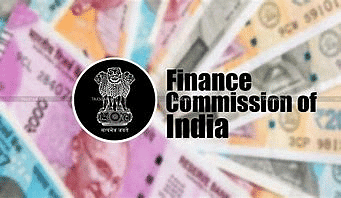
Why in news?
The 16th Finance Commission (FC), chaired by Dr. Arvind Panagariya, focuses on devolution to local bodies, emphasizing challenges in urban fiscal devolution in India.
Background
About FC, Composition, Functions, Role, etc.
News Summary
Article 270 of the Constitution outlines the distribution of net tax proceeds between the Centre and the States.
- Taxes shared include corporation tax, personal income tax, Central GST, the Centre's share of the IGST, etc.
- States receive grants-in-aid based on FC recommendations.
- Divisible pool excludes cess and surcharge levied by the Centre.
About Finance Commission
The FC is constituted every five years by the Union Government.
- Comprised of a chairman and four members appointed by the President.
- Qualifications specified in the Finance Commission (Miscellaneous Provisions) Act, 1951.
- The 16th FC, chaired by Dr. Arvind Panagariya, will make recommendations for 2026-31.
Composition of the Finance Commission
- Chairman: Selected from individuals experienced in public affairs.
- Members:
- Judge of a High Court or qualified to be one.
- Knowledge of government finance and accounts.
- Experience in financial matters and administration.
- Specialized knowledge of economics.
Functions of the Finance Commission
- Distribution of Net Proceeds: Recommends distribution of taxes between Centre and states.
- Grants-in-Aid: Governs grants from the Consolidated Fund of India.
- Improving Fiscal Management: Suggests measures for state financial augmentation.
- Any Other Matter: Addresses additional financial issues referred by the President.
Recommendations by the Commission
Advisory nature; not binding on the government.
Agenda of the 16th Finance Commission
The 16th FC is focusing on devolution of the consolidated fund, particularly in urban areas.
- Local bodies' significance enhanced by constitutional amendments.
- Need for increased intergovernmental transfers to support urban areas.
- Challenges in financial support for cities despite their economic contributions.
- Importance of updated Census data for effective fiscal planning.
Need for Increase in IGTs
Introduction of GST reduced ULBs' tax revenue, necessitating higher intergovernmental transfers.
Need for the Updated Census Data
2021 Census data crucial for accurate fiscal planning, considering urban population dynamics.
GS3/Defence & Security
CHIEF OF THE ARMY STAFF (COAS)
Source: Hans India

Why in news?
Lieutenant General Upendra Dwivedi has taken over as the 30th Chief of the Indian Army, succeeding General Manoj Pande following his 26-month term. General Dwivedi is focused on harnessing modern technologies to bolster operational efficiency through India's tech landscape.
About Chief of the Army Staff :
- The COAS is the top professional in the Indian Army, the land forces division of the Indian Armed Forces.
- Typically, the COAS serves a three-year tenure or until reaching 62, whichever comes first. Extensions are uncommon and usually granted only during wartime or national crises.
Duties and Responsibilities:
- Highest-Ranking Officer: The COAS holds the highest rank in the Indian Army.
- Operational Commander: Usually a four-star general, the COAS is the most senior operational officer, overseeing the army's overall operations during peace and war, ensuring operational efficiency and safeguarding the nation's sovereignty and territorial integrity.
- Military Advisor: The COAS offers counsel to the Indian government and the Ministry of Defence on military affairs.
- Strategic Decision-Making: They are pivotal in devising and executing strategic decisions regarding defense and security.
GS3/Environment
Worlds Oldest Prehistoric Ostrich Nest discovered in Andhra
Source: Money Control
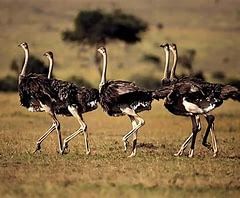
Why in news?
Archaeologists have discovered a 41,000-year-old ostrich nest in Prakasam, Andhra Pradesh.
Prehistoric Ostrich Nest: Details of the Discovery
- The nest, identified as the world's oldest known ostrich nest, measures 9-10 feet in width.
- The nest was once home to 9-11 eggs but was capable of holding 30-40 eggs at a time.
- Ostriches are mega omnivores, weighing between 90 and 140 kg and standing seven to nine feet tall.
What are Megafauna?
- Megafauna generally refers to animals weighing more than 50 kg, though scientific definitions vary.
- The term was first used by Alfred Russel Wallace in his 1876 book, "The Geographical Distribution of Animals."
- Megafauna can be classified into:
- Megaherbivores (plant-eaters)
- Megacarnivores (meat-eaters)
- Megaomnivores (who eat both plants and meat)
Historical Evidence of Megafauna
- Early Documentation: Richard Lydekker in 1884 presented the earliest documented evidence of ostriches in the subcontinent, identifying the extinct Struthio asiaticus in the Dhok Pathan deposits in Upper Siwalik Hills, present-day Pakistan.
- Discoveries in Maharashtra: Archaeologist S A Sali in 1989 reported ostrich eggshell beads and engraved pieces dating back to 50,000-40,000 years ago at Patne, Maharashtra.
- CCMB Research in 2017: Researchers at the Centre for Cellular and Molecular Biology (CCMB) in Hyderabad established the presence of ostriches in Rajasthan, Madhya Pradesh, and Gujarat 25,000 years ago.
Broader Implications and Studies
- Biogeographical Dispersion: The presence of ostriches in India is attributed to bio-geographical dispersion from the continental drifting of Gondwanaland.
- Late Quaternary Extinctions: The study, titled "Late Quaternary extinctions in the Indian Subcontinent," established that the disappearance of large animals began around 30,000 years ago, coinciding with the arrival of humans.
- Co-Evolution Hypothesis: The study supports the hypothesis that fauna and their resilience to extinction resulted from coevolution with hominins, with geographic isolation and abiotic factors accelerating extinction.
PYQ:
The term "sixth mass extinction/sixth extinction" is often mentioned in the news in the context of the discussion of:
(a)Widespread monoculture practices in agriculture and large-scale commercial farming with indiscriminate use of chemicals in many parts of the world that may result in the loss of good native ecosystems.
(b) Fears of a possible collision of a meteorite with the Earth in the near future in the manner it happened 65 million years ago that caused the mass extinction of many species including those of dinosaurs.
(c) Large-scale cultivation of genetically modified crops in many parts of the world and promoting their cultivation in other parts of the world which may cause the disappearance of good native crop plants and the loss of food biodiversity.
(d) Mankind's over-exploitation/misuse of natural resources, fragmentation/loss of natural habitats, destruction of ecosystems, pollution and global climate change.
GS3/Science and Technology
What is Deep Brain Stimulation (DBS) Device
Source: Indian Express

Why in News?
A UK-based teenager has become the first person in the world to be fitted with a brain implant - deep brain stimulation (DBS) device, to help bring his epileptic seizures under control.
- The DBS device sends electrical signals deep into the brain and has reportedly reduced his daytime seizures by 80%.
How Popular is DBS?
- The word epilepsy simply means "seizure disorders".
- Seizures are sudden surges of abnormal and excessive electrical activity in one's brain and can affect how one appears or acts.
- Epilepsy is a brain disorder that causes recurring, unprovoked seizures.
- A person experiences jerking of arms and legs, temporary confusion, staring spells or stiff muscles during seizures.
- It can increase the risk of accidents, drownings, and falling.
- The disease has no identifiable cause in nearly 50% of the cases. However, head trauma, tumors in the brain, some infections like meningitis, or even genetics can lead to epilepsy.
- According to a 2022 Lancet study, between 3 and 11.9 per 1,000 people suffer from epilepsy in India.
- Although several anti-seizure medicines are available in the market, 30% of the patients remain resistant to treatment.
About:
- DBS is a neurosurgical procedure that uses implanted electrodes and electrical stimulation to treat movement disorders associated with Parkinson's disease (PD), essential tremor, dystonia and other neurological conditions.
Working:
- Interrupts the irregular signals that cause tremors and other movement symptoms.
- Neurosurgeons implant one or more wires/leads inside the brain.
- The leads are connected with an insulated wire extension to a very small neurostimulator (electrical generator) implanted under the person's collarbone, similar to a heart pacemaker.
- Continuous pulses of electric current from the neurostimulator pass through the leads and into the brain.
- The doctor programs it to deliver an electrical signal and ensure that the current is properly adjusted to provide effective results.
- In adjusting the device, the doctor seeks an optimal balance between improving symptom control and limiting side effects.
Other Alternatives to Treat Epilepsy:
- DBS is not the first line of treatment for epilepsy.
- Doctors first use anti-seizure medicines and a ketogenic diet, which is high in fats and low in carbohydrates.
- If that does not work, doctors can carry out brain surgery to remove a portion of the brain where the seizures originate.
- Another surgery called corpus callosotomy (doctors remove a part disallowing abnormal electrical signals to travel from one half of the brain to another) may be suggested in some children.
- Surgery is still preferable to implanting a DBS device. This is because DBS devices available in the market reduce seizures by around 40%. In comparison, seizures drop by nearly 90% if the patient undergoes surgery.
- DBS/neurostimulators cost about Rs 12 lakh and there are additional surgical costs that one has to pay in private hospitals, increasing the cost to about Rs 17 lakh.
- In comparison, a brain surgery costs between Rs 2 and 3 lakhs.
- Therefore, such devices should be suggested only for those who have epilepsy which originates from different parts of the brain (instead of one focal point), making operations less viable.
GS3/Economy
RBI has signed up for the Project Nexus
Source: First Post
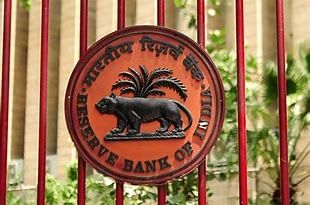
Why in news?
The Reserve Bank of India (RBI) has joined Project Nexus, a multilateral initiative aimed at enabling instant cross-border retail payments by interlinking domestic Fast Payments Systems (FPSs).
- Through this project, India's Unified Payments Interface (UPI) will be connected with the FPSs of Malaysia, the Philippines, Singapore, and Thailand. The platform has the potential to be extended to additional countries in the future.
Bank for International Settlements (BIS)
About:
- Founded in 1930, the BIS is the oldest global financial institution.
Headquarters:
- Located in Basel, Switzerland
Main Functions
- Facilitates collaboration among central banks and provides a platform for policy discussions and decision-making.
- Promotes monetary and financial stability through research, policy analysis, and the development of international standards.
- Provides banking services to central banks and other international organizations, including gold and foreign exchange transactions.
- Conducts research and analysis on global economic and financial issues, producing reports and publications.
Importance
- Acts as a forum for central banks to collaborate on monetary policy and financial regulation.
- Plays a crucial role in setting international standards and guidelines to ensure the stability and resilience of the global financial system.
- Provides a platform for coordinated responses to global financial crises and economic challenges.
Few notable works
- Basel I (1988): Introduced a set of minimum capital requirements for banks, aimed at reducing credit risk.
- Basel II (2004): Expanded on Basel I by adding requirements for market risk and operational risk, emphasizing risk management.
- Basel III (2010-2017): Strengthened bank capital requirements, introduced new regulatory requirements on bank liquidity and leverage, and aimed to enhance the resilience of the banking sector.
BIS Innovation Hub
- Established to foster collaboration on financial technology (FinTech) and innovation among central banks.
Financial Stability Board (FSB) Support
- Played a crucial role in the establishment and support of the FSB, which coordinates international efforts to enhance global financial stability and regulatory reforms.
Background
- RBI has been working bilaterally with various countries to link India's Unified Payments Interface (UPI) with their Fast Payments Systems (FPSs) for cross-border Person to Person (P2P) and Person to Merchant (P2M) payments.
- Project Nexus, conceived by the Innovation Hub of the Bank for International Settlements (BIS), aims to enhance cross-border payments by connecting multiple domestic instant payment systems (IPS) globally.
- Benefits of Project Nexus include standardizing the interconnection of Instant Payment Systems (IPS) and potentially accelerating the growth of instant cross-border payments.
Countries that have joined the platform
- Project Nexus aims to connect the FPSs of Malaysia, Philippines, Singapore, Thailand, and India as founding members and first mover countries.
- Indonesia is expected to join the platform in the future.
GS3/Defence & Security
RIM OF THE PACIFIC (RIMPAC) EXERCISE
Source: MSN

Why in news?
About RIMPAC:The Indian Navy's INS Shivalik has arrived at Pearl Harbour to participate in the 29th Rim of the Pacific (RIMPAC) exercise. The indigenously designed and built 6000-tonne guided missile stealth frigate sailed to Pearl Harbour on June 27 after completion of JIMEX 24, a bilateral exercise between India and Japan.
- RIMPAC stands for the Rim of the Pacific Exercise, which is the world's largest international maritime warfare exercise.
- It is hosted and administered by the United States Navy's Indo-Pacific Command.
- Rim of the Pacific (RIMPAC) exercise is a biennial multinational maritime exercise that fosters cooperative relationships among approximately 29 nations.
- RIMPAC 2024 will take place from June 26 to August 2 in and around the Hawaiian Islands.
- The exercise aims to enhance interoperability, strengthen strategic maritime partnerships, and ensure the safety of sea lanes in the free and open Indo-Pacific region.
- This year's theme is "Partners: Integrated and Prepared." Participating countries include Australia, Japan, the United Kingdom, and the United States, among others.
|
38 videos|5240 docs|1105 tests
|
FAQs on UPSC Daily Current Affairs - 2nd July 2024 - Current Affairs & Hindu Analysis: Daily, Weekly & Monthly
| 1. What is Project Nexus that RBI has signed up for? |  |
| 2. What is the recent controversy between Lok Sabha Speaker and the Opposition regarding muting of mics? |  |





















